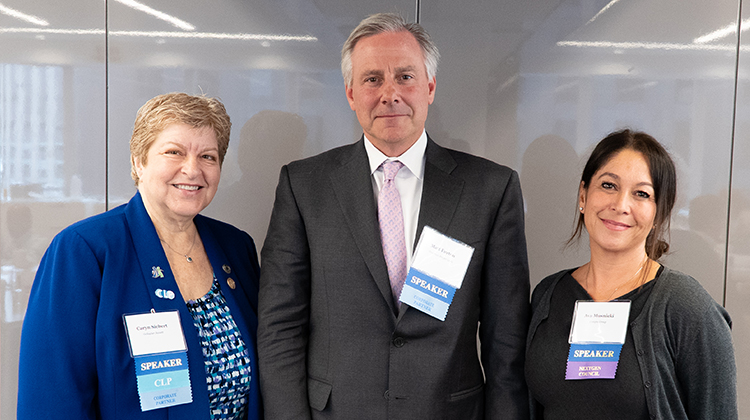Matthew T. Furton, a Partner with Troutman Pepper Locke, Ava Musnicki, a Senior M&A Associate with Compre Group, and Caryn Siebert, VP, Director of Carrier Engagement with Gallagher Bassett Services kicked off AIRROC’s 2025 Summer Membership Meeting. This highly experienced panel brought a wealth of perspective to review the challenges and goals of evaluating claims. Whether from the perspective of the frontline claims handler tasked with ongoing evaluation for reserve or settlement purposes, or from that of the “C-suite” executive making decisions about a book of business, all of the moving parts of determining the ultimate value of claims is a complex business that cannot be reduced to a computer program. By highlighting the necessity, difficulty, and evolving challenges of claims evaluation, the panel contextualized all the pressures that those who have responsibility for this process feel and how their perspectives influence the process.
At the initial level the claim is evaluated by a claims handler but that is subject to a company’s procedures that overlay how that claim is reserved and how those reserves change over time. Initial assumptions are going to be made, but as facts come in and the law develops that value may change. This involves teams of people from layers of management, defense counsel, actuaries, and depending on the purpose of the evaluation, whole teams of people looking at the claim as part of a larger portfolio. It may also involve an insured who brings other factors to the table including the company’s reputation and the distraction of ongoing litigation to the company’s business. Carriers often have “watch lists” so they are not surprised as the claim facts and legal factors change over the life of the claim impacting both settlement value and reserve evaluation. But it is important to understand that the participants looking at a claim, from a Judge looking at what is a “fair” settlement to an auditor reviewing GAAP accounting principal compliance, their motivations impact what they think the value is.
Adding to the complexity and uncertainty of developing facts and law impacting valuation, as well as the perspective of who is reviewing the claim, environmental factors such as the increased use of litigation funding and social inflation can impact the ultimate value of a claim. With litigation funding, you may not know the motivation of the plaintiff to settle because there is someone “behind the curtain” calling the shots. With social inflation, you may be faced with the threat of juries that are willing to ignore judicial instructions to set a verdict based on their desire to punish the defendant. In reviewing books of business, you may be confronted with groups of claims that are trending upward that didn’t exist in the past like PFAS and the 9/11 claims.
The difference between evaluating claims on active books versus run-off books of business adds an additional complication due to the change of handling from one claims handler to another, from one claims management philosophy to another. Someone evaluating a whole portfolio for a transaction like an LPT or a commutation may well benefit from looking at closed claims to see how the reserves developed versus the end results, to determine what management practices were in place that could impact the overall valuation process. There may be a reserving “philosophy” and it is critical when looking at a whole portfolio to ask the right people to explain what the data shows and what that philosophy is.
In sum, this presentation presented a wealth of information shedding light on the myriads of variables in the evaluation process and how those variables impact larger segments and business decisions in the industry. The evolution of a claim value changes not just based on the facts and the law, but on the motivation, bias, and perspective of everyone involved in its ultimate “price”.
